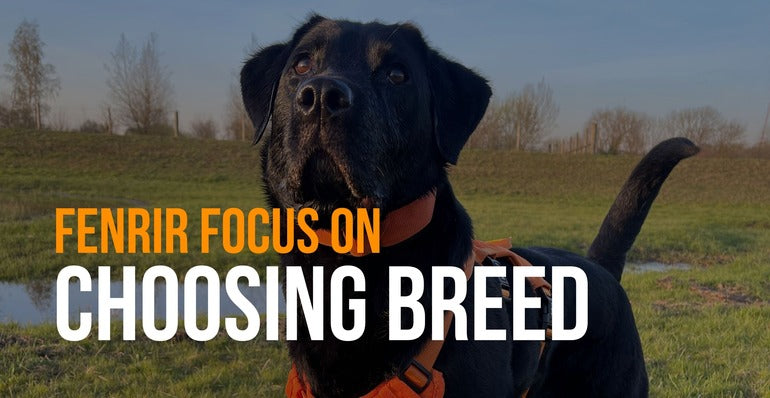How To Find The Perfect Dog Breed?
Here at Fenrir, we are dedicated to helping you find the perfect dog breed – and then to enjoy life with your new canine companion to the fullest. But selecting the ideal dog for your household and your lifestyle is not easy: Today, we have roughly 360 different registered dog breeds on the planet. So, how can you find the right one for you?
Why Is Breed Selection So Important?
In our opinion, breed selection is extremely important, and here is why: Imagine you are going to a restaurant. You sit down at a table and look at the menu. Every page contains a different kind of food: There are starters, meat dishes, seafood, pizza, pasta, deserts and drinks. Vegetarian and vegan options are available, too. Of course, no one forces you to read the menu. If you are hungry and in a hurry to eat, you can skip this phase of the process. Instead, you can ask the waiter to bring you something they recommend. But most people will consult the menu. If they like seafood, for example, they will spend some time reading the descriptions underneath the different seafood dishes. Eventually, they will make their choice -, and then enjoy their meal.
But what does this have to do with getting a dog, you may wonder? Well, ask yourself this: Do you want to be like that hungry, impatient guest in the restaurant? Skipping the process of reading the menu may save you time. But it also may cause you disappointment later on. This applies to buying food and to buying dogs. The person who does their research first, may not get their food (or their dog) as quickly. They might “go hungry” a little longer. But more often than not, this person will genuinely enjoy what they have chosen.
This is why we encourage you to refrain from seeking instant gratification in buying a dog. Instead, we recommend you do plenty of research: Watch videos, read articles and books. Buy a breed encyclopaedia. If you do all this, and you still feel unsure which breed to pick, contact a professional trainer or behaviourist. Tell them what you want in a dog, and ask them for help with the process.
Raising Perfect Canine Companions
If you have selected an adult dog, chances are that they will already have a basis of socialisation, obedience and manners. There is always room for improvement, but in many ways, adult dogs are easier to handle than puppies: Young canines have lots of energy. They are very excitable, and most of them happily engage in behaviours such as destructive chewing, play-biting, whining, and going to the toilet indoors.
To condition your puppy to love their crate, we recommend placing mental stimulation toys in there – such as our Fenrir Hammer. Filled with meat paste or peanut butter and then frozen, the Hammer keeps dogs occupied for a long time. You can put the Hammer inside the crate right before leaving the house. In this way, your puppy understands that you leaving is something to look forward to – and not something to fear. The Fenrir Hammer is virtually indestructible, user-friendly and easy to clean. It comes in different sizes, which makes it the ideal toy for dogs of all breeds and ages.
Another helpful tool for raising puppies is the Ragnar Collar. Young dogs have an uncanny ability to get into trouble when left unattended in the home. With the Ragnar Collar on your puppy, however, you have maximum control: Its lightweight design and soft padded interior make this collar ideal for puppies. If you see that they are getting into anything, simply grab them by the collar. Alternatively, you can attach a light long line to the Ragnar Collar, and let it trail behind the puppy anytime they are not crated.
Just like the Fenrir Hammer, the Ragnar Collar is available in different sizes.
Conclusion
Just like young children, young dogs are brimming with energy, and have an unstoppable zest for life. This is beautiful, and it contributes to the joy that puppies bring to our homes. But if they do not get the opportunity to release all this energy in constructive ways, they can channel them into less desirable avenues. Puppy biting and destructive chewing are two very common examples for this.
Want more information? Find out about choosing a breeder.

